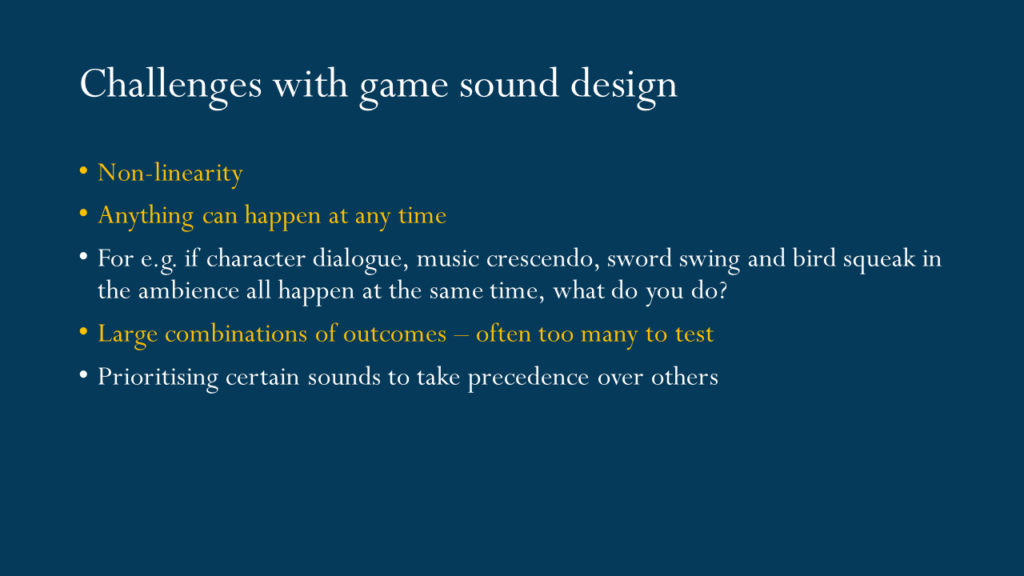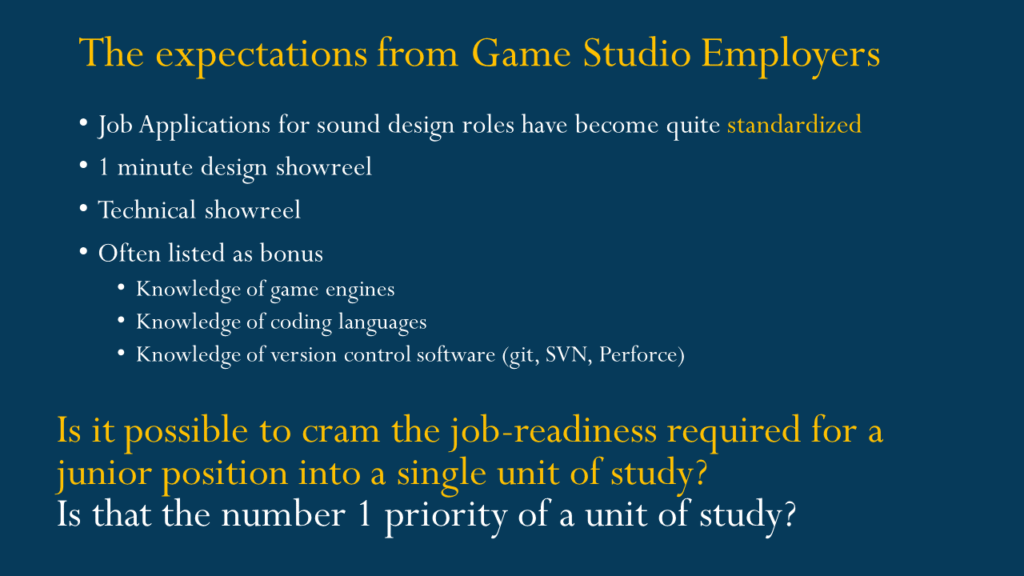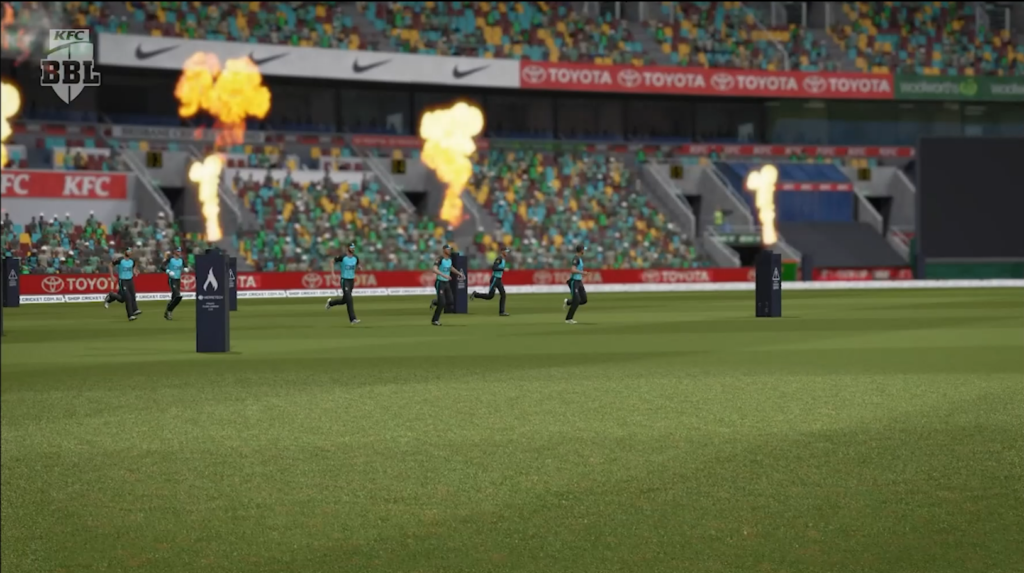On Monday 13th November, the Melbourne Section of the AES held our (slightly delayed) bi-monthly meeting.
Game Sound Designer/Educator/Musician David Lauritsen presented on the topic of:
Video Game Sound Design and Curriculum Development:
Developing the Skills for a Growing Field
After a brief introduction from Section Chairman Graeme Huon, David started his presentation by outlining his history as a musician and developing an interest in audio engineering, leading to his study for a Bachelor of Audio Engineering and a Masters of Creative Industries. He briefly covered his audio recording work at Coloursound and Black Pearl Studios, and film sound work, moving on to audio education at JMC Academy and ultimately into game sound design at Big Ant Studios (AFL23 and Cricket24)


David remarked that audio engineering courses often have at least one film and television sound unit but not always a games sound design unit, and applicants who find work in game audio typically gain their knowledge and skills outside of university.
He commented that video game production is a booming industry, and is a rare field of audio production with full-time job opportunities, noting that Screen Australia now has a funding scheme for independent game productions.
He then outlined three approaches to designing specific sounds:
Record the same object, Find the same object in a sound library, or Record/source/synthesize a “sonically equivalent” sound, noting that the latter is the most often-used option.
He described the differences between audio engineering and sound design.
In audio engineering, he explained, the source material comes to the engineer whereas in sound design the source material comes from the designer.
In sound design for games, he explained, there is the added requirement for the sounds to play at the correct time, dependent on the gameplay.
He demonstrated this with a “simple” scene from the game “Cricket24”, of a player character walking through a door with the associated sounds. He noted that decisions had to be made about the optimal point to start playing the sound sequence – was it when the scene loads, when the cutscene starts playing, or when the character’s animation begins?
He explained that he chose the point where the animation begins because that ensured correct sync regardless of the computer’s workload at the time.
He then showed some designer screens used when adding commentary to the game, describing the conditions that allow the system to choose one of many possible dialogue options for commentary phrases.
David then covered the unique challenges of game sound design, as outlined in this slide.

He went on to describe and demonstrate particle effects, incidental sound effects that enhance the experience, without being directly related to gameplay. In this title, it was elements like flame jets and fireworks.
Responding to a question from the audience David explained about introducing delay to provide the correct audio/video perspective for the selected camera position and positioning the particle effects in 3D space.
He then described the audio pipeline, and the use of “middleware” such as Audio Kinetic Wwise or FMod to manage the assets and integrate them into the game.
David then went on to explain the job entry process for the games industry, describing the expectations of Games Studio employers, emphasising the importance of having a one-minute design showreel, explaining that even applicants without job experience should prepare a showreel by replacing audio in a game segment with their own work.

He moved on to deal with the topic of the education for game sound design aspirants
He explored how the skills could be taught.
David asked – is it possible to cram the job readiness required for a junior position into a single unit of study? Probably not, he suggested.
He concluded with the observation that, while job readiness is not the only goal of a course, it is still an important aspect.
A Q&A session followed the presentation covering a range of related topics on both game sound design practicalities, as well as thoughts on education in this field.
The AES Melbourne Section thanks David for a most interesting and informative presentation.
We also thank Daniel Bodnarcuk and his team at the Melbourne Polytechnic Fairfield Campus for providing both the venue and the technical facilities for recording and streaming the event.
Here’s an edited video of the YouTube stream:
This video can be viewed directly on YouTube at:
https://youtu.be/NnpDGXgpyRQ
A PDF of David’s slides is available at:
https://www.aesmelbourne.org.au/wp-content/media/VideoGame_Sound_Design.pdf
Related Links:
BigAnt Studios: https://www.bigant.com/
Wwise: https://www.audiokinetic.com/en/products/wwise/
FMod: https://fmod.com/
Screen Australia – Games Production Fund: https://www.screenaustralia.gov.au/funding-and-support/online/games/games-production-fund
Author: Peter Smerdon


